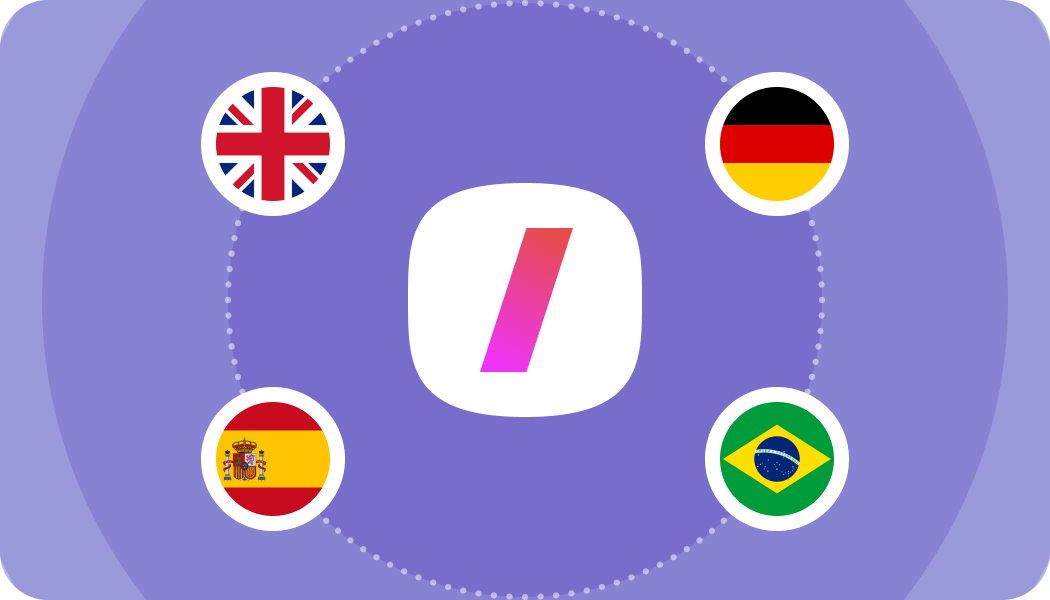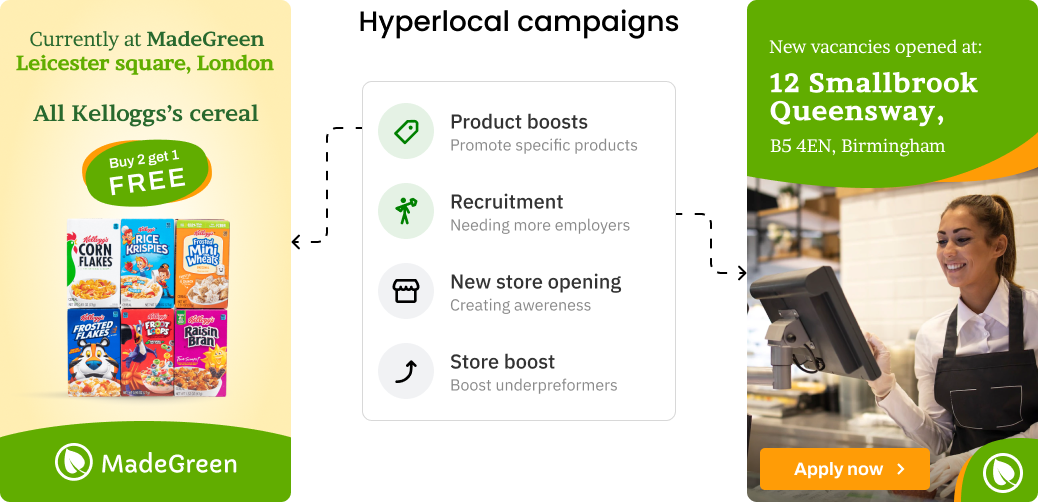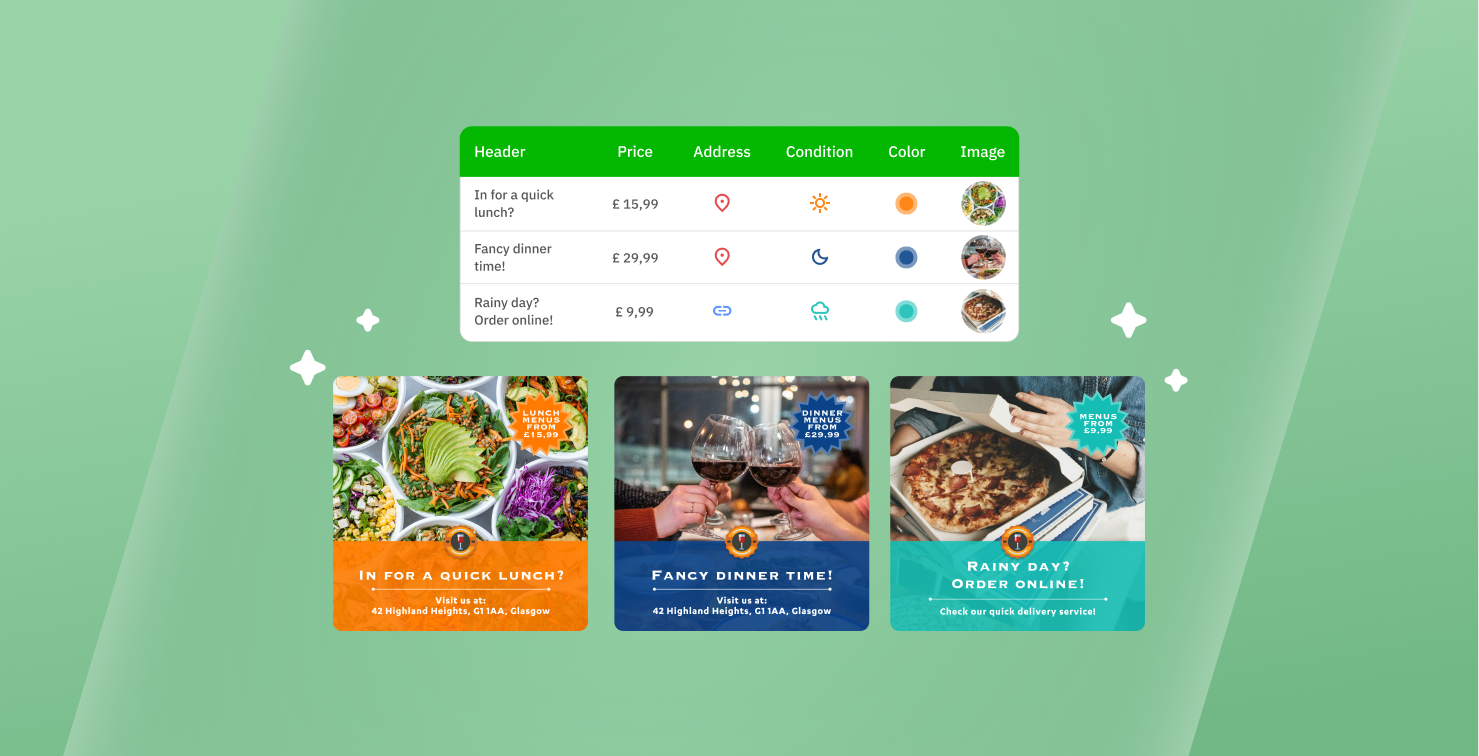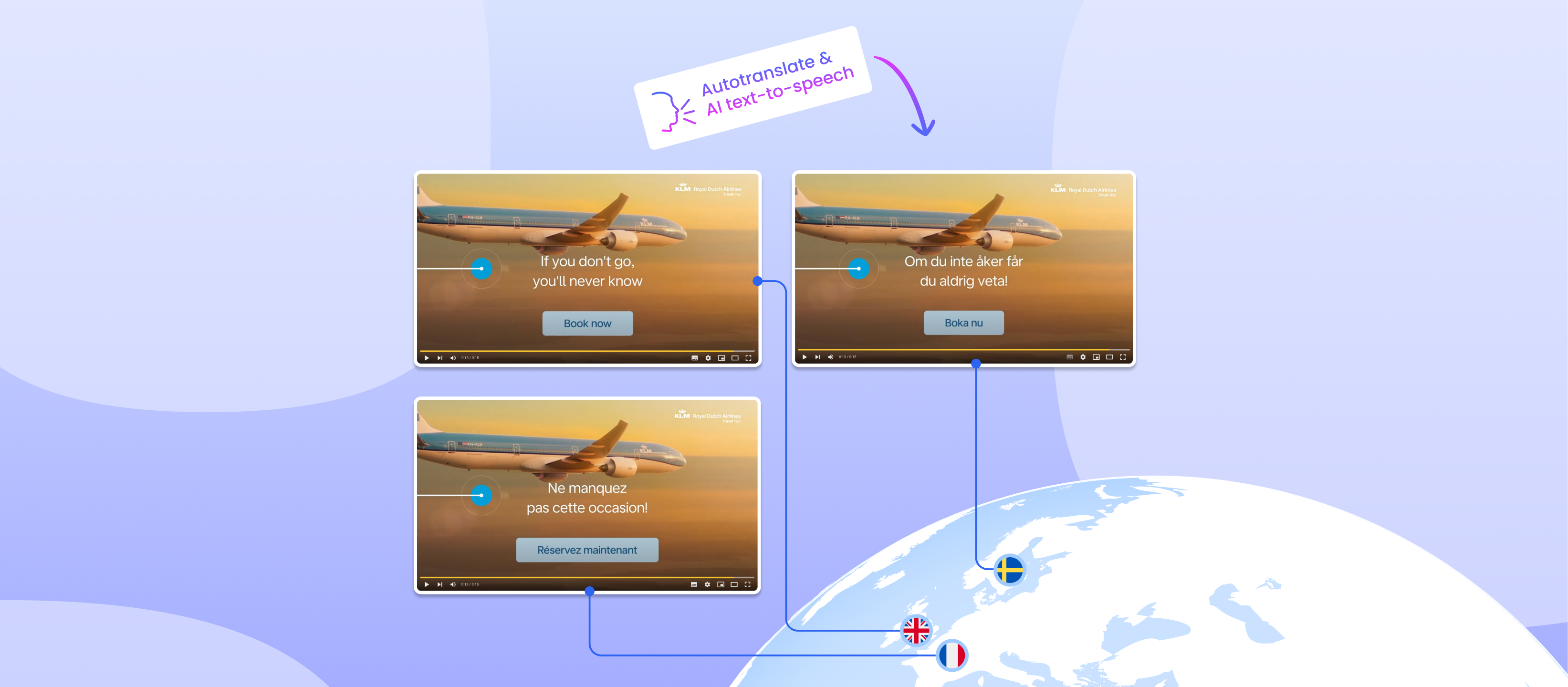

Three ways to manage global campaigns with local agility
Tailoring your global campaigns to local markets can be difficult and very time-consuming. Different markets have unique campaign requirements, ranging from language variations to local nuances, tones of voice, and brand identities. Also, the need to promote or pause specific products or offers can vary from one market to another. As a result of these repetitive manual adjustments, companies often struggle to roll out high-quality local ad campaigns at scale. Here are some key features to consider when your goal is to efficiently manage global campaigns with local agility.
Translate your campaigns
Managing a campaign across multiple markets requires a nuanced tone of voice that resonates locally while maintaining brand consistency. However, manually modifying copy for each campaign, country, and channel can be complex and time-consuming.
This is where feeds come into play. Automate the process by linking your campaign to a sheet containing all the necessary copy translations, logos, USPs, and CTAs for each market to create relatable local ads at superhero speed. Local marketers can check nuances using authorisation management, and last-minute tweaks can be made while ensuring that all formats across all channels are automatically updated. You can even create templates for recurring campaigns. But what about those special one-off campaigns that require translations?
You can adapt your video ads to various online ad formats and make online content production scalable. With numerous specifications to consider in the creation process, such as copy in six different languages, precise timing, different frames for each format, and ensuring clarity in the storyline for every variation, video automation emerges as the ideal solution. This innovative form of creative production, powered by feed-based automation and seamless translation integrations, generates countless ad variations that can be effortlessly scaled across all online and social channels. Just imagine trying to create them all manually!

2. Tailor campaign concepts to your market
Empower your local teams with ready-to-use campaign concepts. Local teams often miss the expertise or budget to create strong concepts that align with the brand identity. Cape's input validation functionalities ensure that local marketers can only modify essential elements in the campaign, such as products, destinations, or the offers they want to promote.
This approach allows you to (1) prepare campaigns for local markets, so they only need to make minor adjustments before a global campaign goes live or (2) enable local teams to launch their own campaigns from a campaign library containing various ready-to-use concepts. In-tool authorisation management enables the global brand team to review local ads through an intuitive interface, ensuring that local campaigns follow the brand guide and can go live in no-time.
By utilising a feed-based setup with localised feed-data, you can apply even faster automated concept creation. Local markets only have to check assets for final approval before publication. This approach ensures that disclaimers, pricing, and visuals are all automatically in the right place. Businesses can also automate tailored campaigns using data-driven feeds, such as real-time demand data, discounts, and the competitive pricing information.

3. Automate hyperlocal campaigns
If you are already using feeds to enhance your campaigns, why not take it a step further? Whether you have physical stores, specific catchment or service areas, or operate in different countries, it’s 100% certain that your marketing needs vary across locations.
You can hyper-localise your marketing setup with feeds, covering everything from creative production to campaign management and targeting. By setting up feed commands that detect when a branch, product, or service requires a promotional boost, you can efficiently manage nationwide or worldwide campaigns with local agility, all without lifting a finger. These ads will be precisely targeted to customers based on their proximity to the branch or their interest in the product. This approach considers different languages, local nuances, tones of voice, and brand identities. Additionally, each market can promote its own relevant products or offers. You can create a template, define which elements require adjustments, and then export, import, or grant local marketers access to the environment.
For example, consider supermarkets. One location might want to boost cereal sales if they sell fewer than 200 boxes per day, while another location might target cereal promotions when they sell fewer than 80 boxes per day. Whether it's a product, a specific number, weather changes, or special offers based on location, you can set feed demands that dynamically impact your ads. These ads can automatically adapt to the unique circumstances of each location without touching a single button.

Want to know what we can do for you? Contact sales@bycape.io for more info.
Latest News

Blog
3 min read
16 July 2024
Learn From Accenture: Stay Ahead of the Curve With These 5 Trends
Cost-cutting has pushed customer obsession down the priority list. It's time to prioritise customer experience again. Read more about this in this recent research by Accenture.

Blog
3 min read
16 July 2024
Navigating Local Activation Challenges
Imagine if every store opening or promotion could speak directly to the unique tone of voice of each community. Local activation is all about making your brand the hometown hero everywhere you go.

Products and features
2 min read
12 July 2024
Elevate Your Campaigns with AI-Generated Voice-Overs: A Success Story with KLM
Our Voice-Over Generator (Text to Speech) is revolutionising how businesses create impactful, multilingual content. A recent success story comes from KLM, who leveraged this innovative feature for their global campaign.
